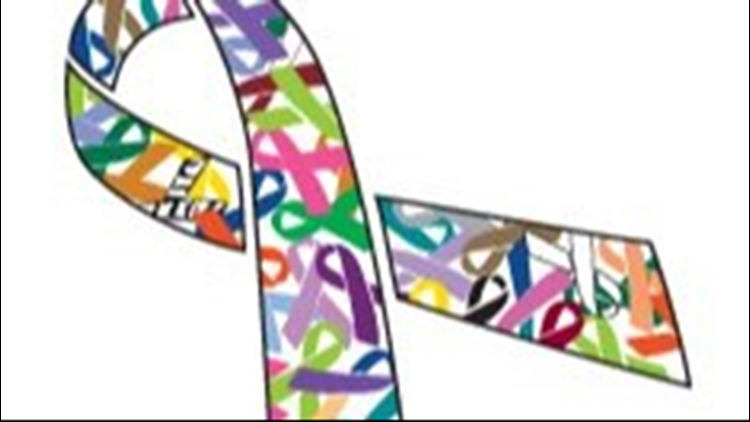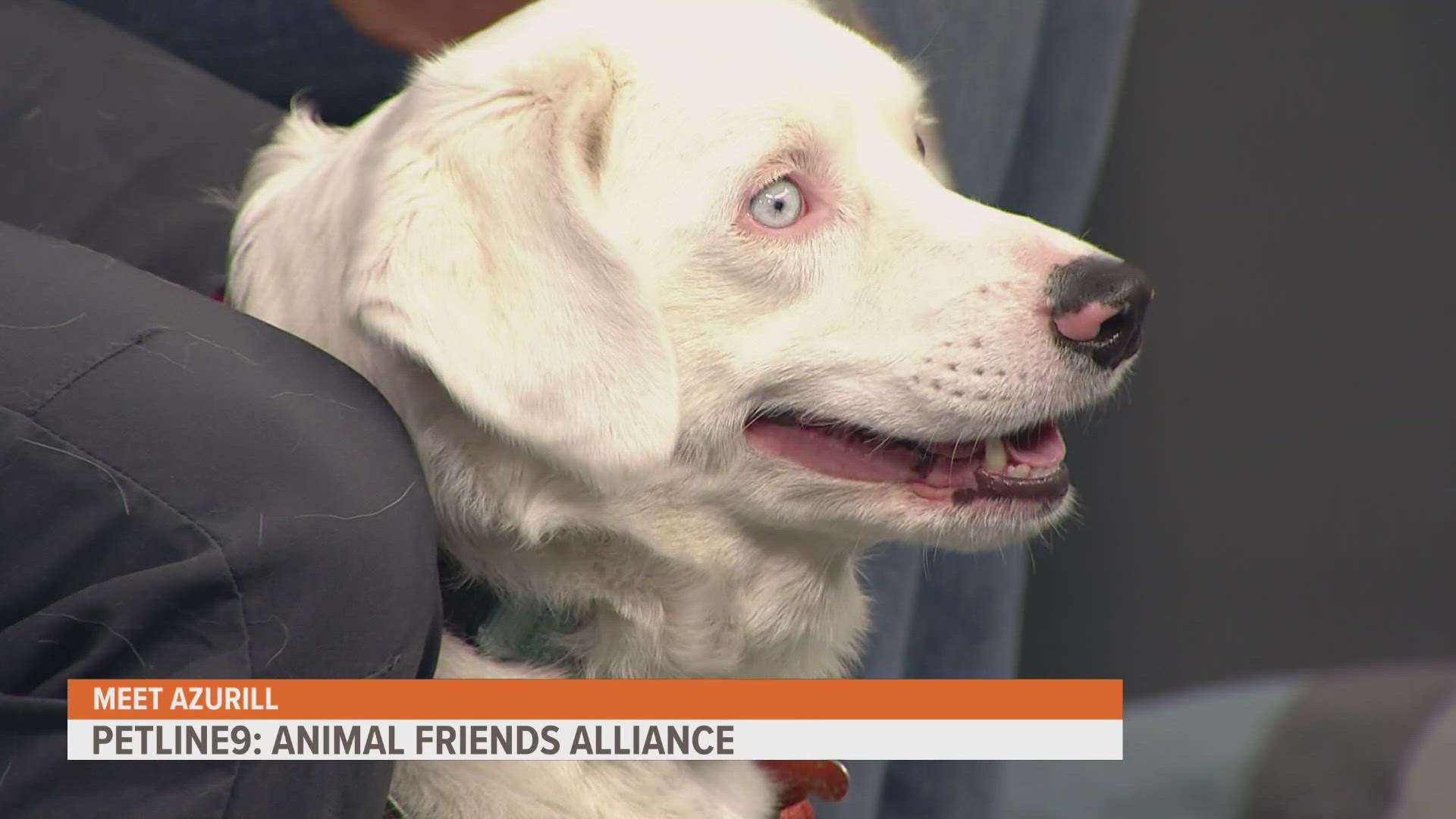This month for Buddy Check9, we are focusing on skin cancer. Information for this story has been provided by Colorado Cancer Coalition, American Cancer Society, Sarah Cannon Cancer Institute at HealthONE, and the University of Colorado Cancer Center.
Call to Action
More skin cancers are diagnosed in the United States each year than all other cancers combined. It is also the most common cancer in the US. Fortunately there are ways to protect yourself from the sun’s rays and also catch skin cancer early.
Three common skin cancer types:
- Basal cell carcinoma is a slow-growing cancer in the layer just underneath the outer layer of the skin (epidermis) where the basal cells are located. Basal cell carcinoma seldom spreads to other parts of the body.
- Squamous cell carcinoma is more rare than basal cell cancer and lives in the epidermis. It spreads more often than basal cell carcinoma.
- Melanoma is the most serious type of skin cancer and occurs when melanocytes, the pigment cells in the lower part of the epidermis, become malignant, meaning that they start dividing uncontrollably. If it spreads to the lymph nodes, it may also reach other parts of the body, such as the liver, lungs or brain. In such cases, the disease is called metastatic melanoma.
Symptoms
Skin cancers are known to disguise themselves and may look like a thick or jagged scar, a smooth bump, a firm red lump, a dark, shiny bump, a dark patch on your palm or the bottom of your foot or a dark band under your nail.
Types of skin cancer irregularities that are common symptoms of melanoma are listed in the skin cancer alphabet below. If you have any of these, have your skin checked by your doctor or dermatologist.
A guide to find melanoma is the ABCDE rule. Report any of the following to your doctor.
A is for asymmetry - the two halves of a mole do not match
B is for border - edges are irregular, notched, blurred or ragged
C is for color - color is not the same all over
D is for diameter - the spot is bigger than the size of a pencil eraser, but some melanomas can be smaller
E is for evolving - a mole changes in shape, size or color
A common sign that you may have a concerning mole is if it looks different from all the rest.
Knowing where your normal moles are located on your body, what they look like and their size is crucial in self-screening for skin cancer. Nearly all skin cancers can be treated effectively if they are found early, so it is important to know what to look for and properly document the ‘normal’ moles.
Risk Factors
As skin cancer rates continue a relentless 30-year climb, striking at younger ages and outnumbering all other cancers combined, changing Colorado youth behavior is critical, says Myles Cockburn, the University of Colorado Center’s program co-leader for prevention and control who launched the SunSmart program in Aurora Public Schools. Cockburn says SunSmart program could reach as many as 55 classrooms, including some Denver public schools.
“Colorado has among the highest skin-cancer rates in the country,” says Cockburn, who developed a SunSmart program in Los Angeles while working at USC, which he hopes to partner with the CU program. High altitude and outdoor-recreation rates contribute to the elevated incidence, which is as much as 30 percent higher than the national average, according to the Colorado Melanoma Foundation. “So it’s obviously a good place to do skin-cancer prevention,” Cockburn says.
“We don’t really understand the biology that well, but I think that part of it is that your skin is still developing when you are young, up until age 10 or 12. So if you bombard it with radiation, which is what ultraviolet is, when it’s developing, you are much more likely to end up with a melanoma in adulthood,” Cockburn says. Simple math explains another factor: The more sunburns over the course of a life, the higher the risk of skin cancer, he says.
Focusing on pre-teens, who are old enough to understand the science and still young enough to listen, could help with a “really disturbing” increase in skin cancer in the early-20 age group, Cockburn says. Tanning behaviors, especially tanning bed use, are largely to blame for the young-adult cases, he says.
One major risk factor for skin cancer is exposure to ultraviolet (UV) radiation. Sunlight and tanning beds are sources of UV rays. UV rays are the main cause of damage to the skin if exposed. These rays damage the DNA of skin cells and skin cancer starts when the damage impacts the DNA of genes that control skin growth.
Screening Guidelines
To check for skin irregularities, strip down to your birthday suit and use a mirror to examine less accessible areas of your body such as your scalp, back and buttocks. Note any changes and bring them to your doctor’s attention promptly.
Follow the following rules to protect your skin:
- Visit your primary care physician or dermatologist once a year for a skin check
- Limit your sun time
- Skip the tanning beds
- Use sunscreen and wear protective clothing
Social Media Resources:
- Take the American Cancer Society’s skin cancer quiz and learn the facts about the disease
- With warmer weather around the corner, learn how you and your family can be safe in the sun
- Perform a full-body self-exam each month to become familiar with your skin and to identify any changes that could signal skin cancer. You can download a body mole map from the American Academy of Dermatology to learn how to examine your skin and what to look for. If you see anything unusual — a mole or growth that is growing, unusual, bleeding or not like the others — see a dermatologist.
Interesting Facts
This year in Colorado and estimated 1,640 people will be diagnosed with melanoma of the skin. An estimated 180 Coloradans will die from the disease this year.
Thank you to the Colorado Cancer Coalition for information that was used in this article. The Colorado Cancer Coalition is a statewide collaborative working to eliminate the burden of cancer in Colorado. Our task forces and members work together to improve the life of all Coloradans touched by cancer. To learn more go to http://www.coloradocancercoalition.org. The Colorado Cancer Coalition is a sponsored project of the Trailhead Institute, a 501(c)(3) nonprofit organization dedicated to improving the public's health and the environment in Colorado and the Rocky Mountain region.
Thank you to the American Cancer Society for contributing information that was used in this article. For cancer information and resources, contact the American Cancer Society 24 hours a day at 1-800-227-2345 or visit www.cancer.org. The Society’s mission is to save lives, celebrate lives, and lead the fight for a world without cancer.
Thank you to the Sarah Cannon Cancer Institute at HealthONE for contributing information that was used in this article. askSARAH – Have cancer questions? Sarah Cannon Cancer Institute at HealthONE is pleased to offer access to askSARAH- a dedicated helpline designed to help answer your cancer-related questions. Whether you have been recently diagnosed with cancer or have questions about screening, signs or symptoms, a registered askSARAH nurse can help. Committed to ensuring you have the right resources close to home, our nurses are available 24/7. Calls are confidential. Contact askSARAH at 303.253.3225 to connect directly to a nurse to help guide you.
Thank you to The University of Colorado Cancer Center, headquartered at the Anschutz Medical Campus, is Colorado’s only National Cancer Institute-designated comprehensive cancer center, a distinction recognizing its outstanding contributions to research, clinical trials, prevention and cancer control. CU Cancer Center is a consortium of approximately 400 researchers and physicians at three state universities and three clinical institutions, all working toward one goal: Translating science into life. For more information visit Coloradocancercenter.org.



